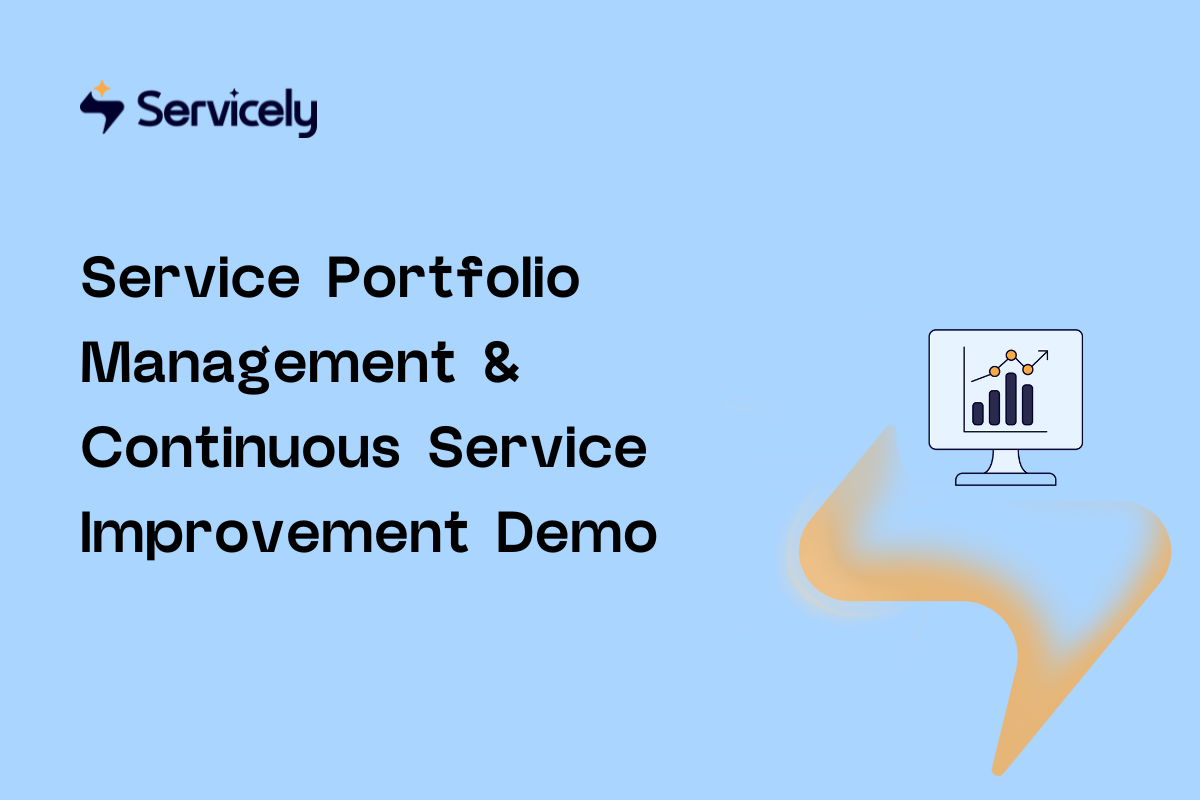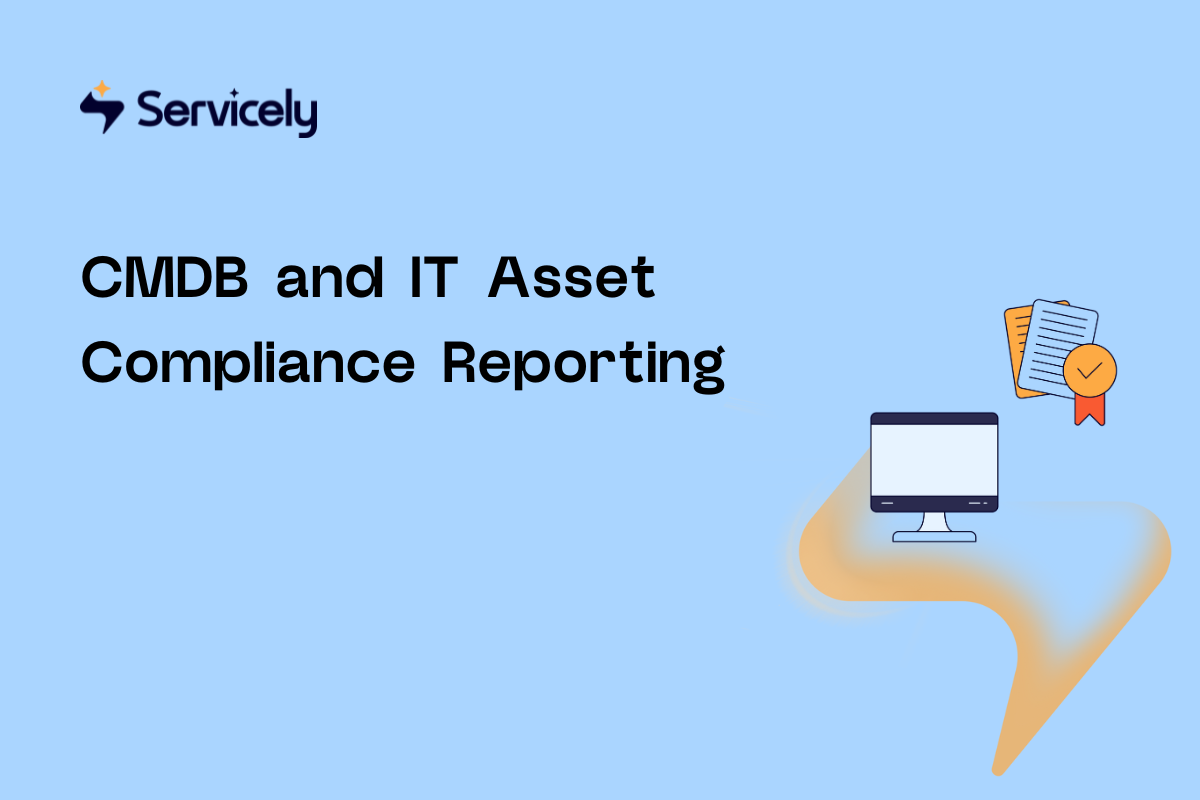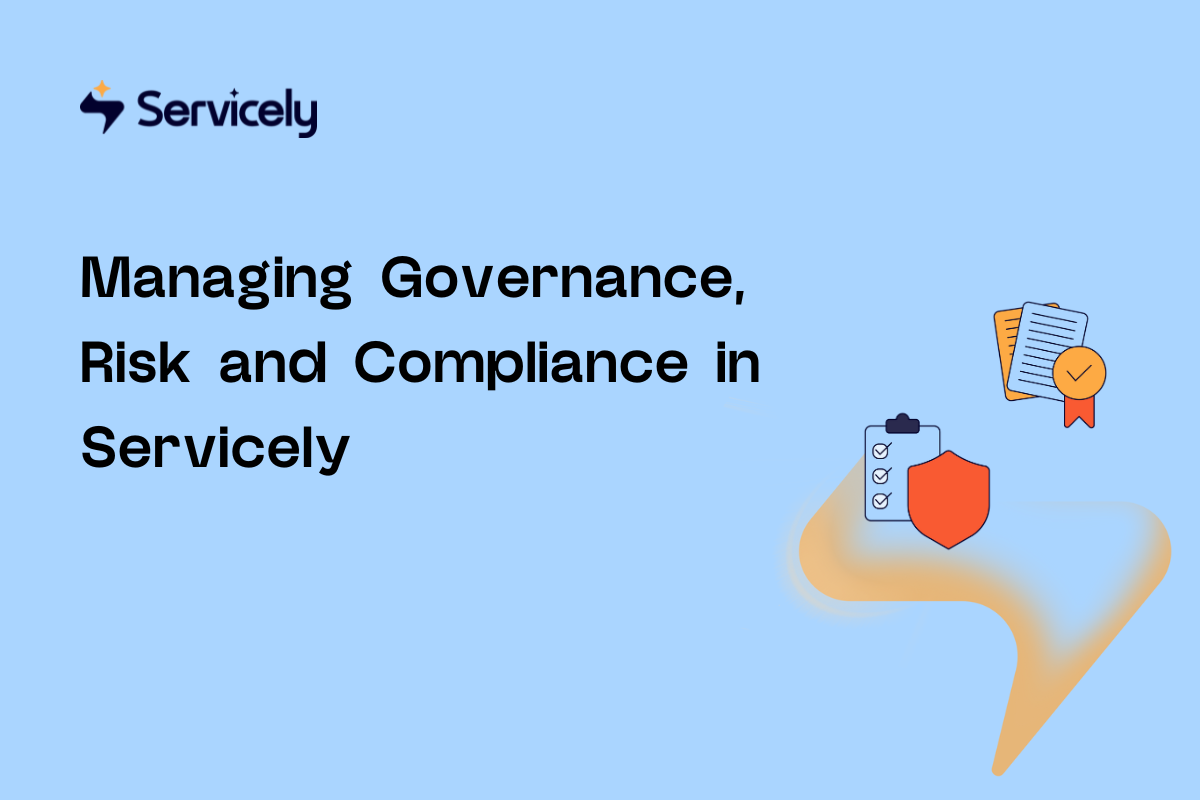Service Portfolio Management and Continuous Service Improvement Demo
In this short demo, we'll show you an overview of how you can perform Service Portfolio Management and Continuous Service Improvement in the Servicely platform.
Video Transcript
In this video, we'll have a look at how Servicely's holistic view on service portfolio management and continuous service improvement can help organizations drive improvement initiatives and get a portfolio overview of the different services provided to the organization. The first thing we'll notice in the service portfolio management application to the left is the fact that we have a list of portfolios. Here, we can see the groupings of services that we would be providing to our organization. For instance, we have a portfolio concentrated on employee enablement and compliance, and we can also see the state of that particular portfolio. There is a workflow that drives our activities forward in terms of figuring out the current portfolio status for a particular business improvement that we're trying to achieve.
We can also see the category of the actual portfolio, and the subcategories. We have a budget, operational performance, strategic alignment, organizational strategy, and the business value, as well as the financial performance that we're looking to achieve. There's a link to risk analysis, the actual investment required, and related services that sit under that portfolio. In this case, we can see we've got client computing, so that means we can view the service for client computing. Again, there's a supporting workflow here. We've got the type of service, the customer satisfaction element, any potentially related configuration items, description, design, business case, operational details, and any provided documentation in terms of management, delivery, or support. We also have a link to catalog items and, most importantly, continuous improvement.
Here in the continuous improvement initiative, we can see enhancements for this particular service. We can open up that initiative to see the current state objectives, any particular stakeholders, the data sources, what type of measurements we're looking at, what type of outcome we're trying to achieve, lessons learned, and individual improvement tasks that can be driven and assigned to individuals. This ensures that we drive continual service improvement.
Now, there's no service portfolio management and continuous service improvement without reporting. Under service portfolio management, we see our portfolio overview. We know the groups of services we have, the different categories, and we have a spider web looking at the operational performance for the portfolio we have in place. There's our financial overview discussing financial health, cost efficiency, and return on investment for the different portfolios. We have our services overview, which is the next step down the ladder, understanding what services we're providing and what services are by portfolio. This overview shows how many services sit under each portfolio, and we have a link to the CMDB. This gives us the ability to understand anything we manage in the CMDB and link that to the service experience within individual portfolios. We can begin comparing user satisfaction to what we're managing in the CMDB based on how we manage our portfolio of services.
As a final step, we have the continuous service improvement activities where we can see the different activities we're driving and the tasks that need to be completed. This helps us improve the service experience and thereby achieve a better outcome for the entire portfolio. This is how we in Servicely manage service portfolio management and drive continuous service improvement activities based on the tracking capabilities. The ability to do this integrated with the CMDB in the system can also impact other processes like incident and problem management.
Other Videos
Other Resources
Our Solutions
Sign up for Demo

.svg)






%20(1200%20x%20800%20px).png)






























